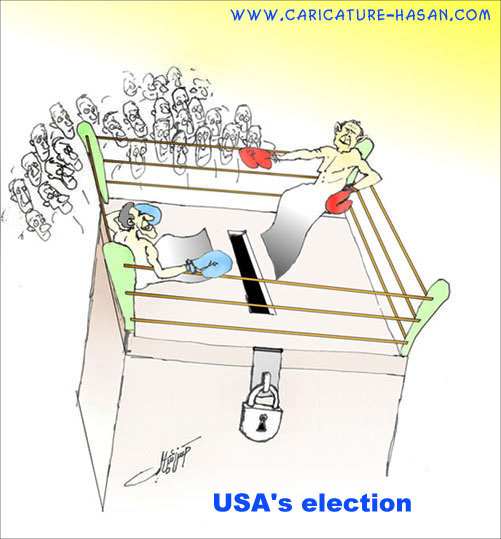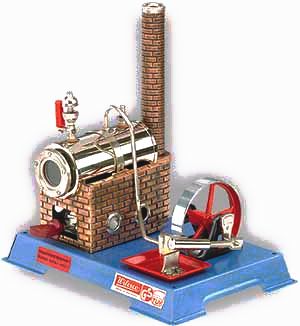
september 2004
Abiotic oil, aka as geopressured gas,
is a concept well know in the oil business. (The
phenomenon of
 reservoirs
recharging has been known for many years. The Yates
field in Texas is a good example.) A phone
call to any established geophysicist (independent of the
oil business) or petroeum engineer with any kind of
experience would disclose the existence of this
phenomenon. By
the way I was on a huge gas platform in the North Sea
about fifteen years ago---the Brae B. This little
beauty weighs in at literally hundreds of thousands of
tons. It is built to withstand waves up to 100
feet, which is not an uncommon occurrence in the
North Sea. At that time the drilling manager told me that
they went too deep on one of the first production wells
and hit a reservoir of geopressured gas. They
almost lost control of the well and if they had not
got control of the well they might have lost the
platform. Fifteen thousand feet of drill pipe,
drill mud and drill stem started coming up out of
the sea floor. I can't even guess how much a drill
column nearly three miles long would weigh. But,
the point is that there is so much methane in the
earth that they wanted to AVOID hitting this deep
reservoir. At that time it was considered just
to dangerous to exploit. That has now
changed thanks to the Russians.
reservoirs
recharging has been known for many years. The Yates
field in Texas is a good example.) A phone
call to any established geophysicist (independent of the
oil business) or petroeum engineer with any kind of
experience would disclose the existence of this
phenomenon. By
the way I was on a huge gas platform in the North Sea
about fifteen years ago---the Brae B. This little
beauty weighs in at literally hundreds of thousands of
tons. It is built to withstand waves up to 100
feet, which is not an uncommon occurrence in the
North Sea. At that time the drilling manager told me that
they went too deep on one of the first production wells
and hit a reservoir of geopressured gas. They
almost lost control of the well and if they had not
got control of the well they might have lost the
platform. Fifteen thousand feet of drill pipe,
drill mud and drill stem started coming up out of
the sea floor. I can't even guess how much a drill
column nearly three miles long would weigh. But,
the point is that there is so much methane in the
earth that they wanted to AVOID hitting this deep
reservoir. At that time it was considered just
to dangerous to exploit. That has now
changed thanks to the Russians.
Let me give you one more example of how much gas
is available without even considering the "deep
gas." The North Rankin A platform was
developed to exploit the Carnarvon basin which is just
off the northwest coast of Australia near
Karratha. When North Rankin was built it was the
biggest gas platform in the world. For twenty years
now it has been producing at the rate of 180 million
c.f. of gas p.d., and 47,000 tons of condensate per
day. It shows absolutely no sign of slowing
down. The roar of the gas coming up through the
risers is so intense that you must wear ear
protection. This single platform provides all the
natural gas fuel for the entire west coast of
Australia. In addition, every year, this one
platform produces between 7 and 8 million tons
of Liquified Natural Gas. The LNG
provides most of the gas energy requirements for
Japan. Then there are several million tons of
condensate and LPG and so forth which are shipped
into international markets.
I personally knew Dr. Soma Kurtis, who
was the petroleum engineer that did the first
geophysical survey work in the 1930's in
northern Alaska for Marathon Oil. At
that time it was called the Ohio Oil
Co. He told me there is an ocean of oil
on the north slope. In fact there is probably more
oil and gas in Alaska and offshore of
Alaska than in all of Saudi Arabia. Similarly,
there is more oil and gas in Alberta, Canada than in
Saudi Arabia. Similar reservoirs exist off the California
coast, the Florida coast, Mexico, the South China
Sea and the great rift valley in the horn of
Africa. Why do you think we sent the army into
Somalia? Do you really think we were interested,
(as the controlled media kept telling us), in
"Nation Building?" What utter
crap! The Falklands Islands, aka the Malvinas,
sits on one of the largest concentrations of hydrocarbon
fuels in the world. Do you really think the Brits
killed all of those men in the Falklands war for God, the
Queen and a bunch of sheep
farmers? Even more significant, do you think
the Argentineans risked going to war with the United
Kingdom because they wanted the Falkland Islands---a
patch of barren real estate that is only suitable
for sheep farming?
The world is fighting over oil, not
because we are running out of oil, but because there is
so much of it. It is not the shortage of oil that
drives nations to war, but the overwhelming desire to
control it. Oil is power. That is one of
the main reasons for Gulf War I and Gulf War II.
But, the real reason has to do
with globalism and the agenda
of international Zionism. Oil gives the Arabs
lots of economic and political clout. You
cannot bring the Arabs under control and into the
globalist plantation as long as they control one of the
largest concentrations of hydrocarbons on the
planet. If you take away their control
of the oil, then you take their source of
geopolitical power. Think of it as
economic and political castration.
Welcome to the Matrix my
friend. Life is never what it appears to
be. Tom
********************************

*************************************
Oil .....The
Greatest Conspiracy of the Last Century
At the time of our entry into World War I our citizens and soldiers were told that "The War to End All Wars" was being fought to "Make the World Safe For Democracy." Later historians pointed out the root cause of World War I was trade rivalry between Great Britain and Germany. I.e., World War I was fought over money.
Shortly after our entry into World War II our citizens and soldiers were told that the War was being fought to "stop Nazi aggression" and to "stop the monster Adolf Hitler." Over sixty years later we are still being told the same thing.
As the historians who dissected the root cause of World War I proved, wars are not fought over ideology. Wars are fought over money.
What if World War II was fought to preserve oil company profits? Sound far-fetched? Let’s look at some of the evidence.
The Rockefeller-controlled Standard Oil
John D. Rockefeller got his start selling crude oil as a cure for constipation. Out of that humble "snake oil" beginning evolved our modern pharmaceutical industry.
The cotton gin had been invented in 1791. Up until that time a lot of clothing had been made from the hemp or marijuana plant. Hemp was and is 26 times more durable than cotton. The cotton could be processed by machine. Hemp couldn’t. Then, in the early 1930s, International Harvester built a machine that would process hemp. It was in the early 1930s that the petroleum industry introduced synthetic fabrics, such as nylon and rayon. Then, in 1937, Congress passed the Marijuana Stamp Tax Act. If you wanted hemp, even for clothing, you had to pay a $100 a pound tax. This was in the days when a brand new car cost $900.
Prior to World War II petroleum had competition for use as a fuel. Chrysler was shipping cars to New Zealand equipped to run on alcohol. In the Philippines everything up to and including locomotives ran on alcohol made from sugar cane. Europeans ran a tank full of alcohol through their automobiles on a semi-annual basis in order to clean the carbon off their cylinder heads.
The Chinese were running their diesels on tung (vegetable) oil. Every farm in America had a steam engine. The fuel for the boiler was wood, corn stover, or the like.
On December 7, 1941 we were dragged into World War II. Supposedly the Japanese had previously invaded Manchuria, a program we allegedly interfered with, in a search for oil. At least, that’s what we’re told.
However, when our Marines opened drums marked "Aviation Fuel" written in Japanese at Guadalcanal, what they found was alcohol. The Japanese Zero, a wooden airplane with a nine-cylinder radial copied from our Pratt & Whitney engines, ran on alcohol. The Zero could outrun and outclimb anything we had at the beginning of the War. Alcohol allows the use of a higher compression in the engine, runs cooler, and permits higher rpms.
During the War the government sent people around to collect steam engines from farms in order to melt them down into planes, ships, tanks, and guns. Whether this was actually necessary was a dubious proposition. Henry Ford, for example, unloaded iron ore in one end of his factory and spit completed machines out the other. Ford’s Willow Run plant alone produced 1,000 B-29 bombers a month. It is unlikely that an occasional melted-down steam engine would have provided that much extra iron for the war effort.
The War ended in 1945. By 1946 a steam locomotive had reached such a level of efficiency that it took only a cup of water and a pound of coal to move one ton one mile on the rails.
That same year the rest of the world was using petroleum products for fuel exclusively. The last steam locomotive was built in the United States in 1947. The conversion to diesel, a petroleum product, was in progress.
Today steam is used only in large municipal power plants. A handful of people run their diesel cars on vegetable oil or their spark-ignition car engines on alcohol.
Was the catastrophic World War II fought to make the world safe for petroleum? And is the interest in alternative fuels partially responsible for the planned invasion of Iraq?
